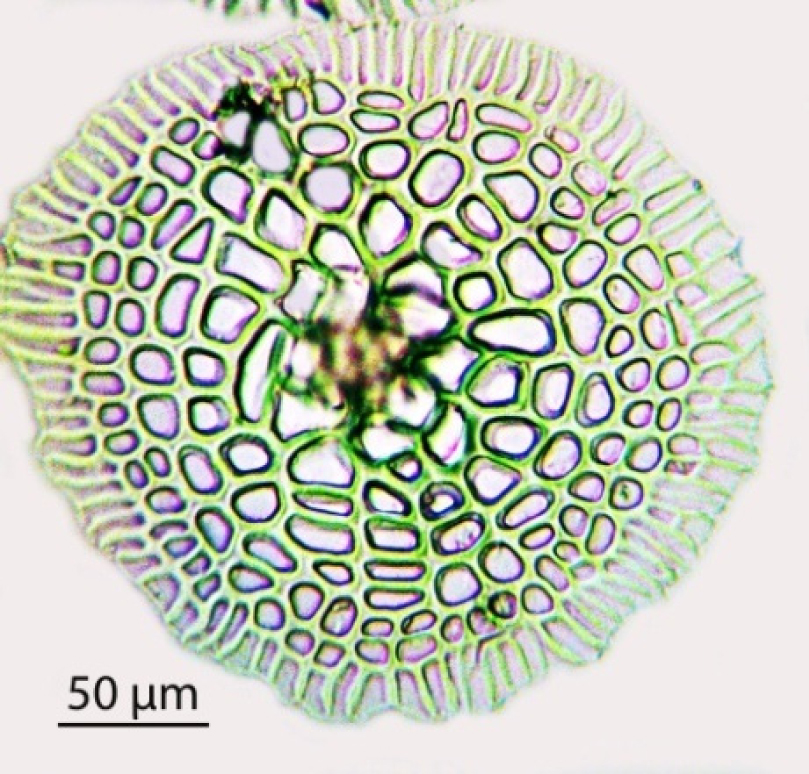Differences in anatomical and morphological structure of plants from the genus Neoregelia L.B. Sm. (Bromeliaceae) as a result of adaptation to arid environmental conditions
Abstract
Comparative analysis of the anatomical leaf structure of 13 species of the genus Neoregelia has done. Species differ mostly by morphometric and quantitative parameters of their leaves. Also trichomes of N. lilliputiana and N. pendula can be considered as markers of a species. Two possible ways of leaves adaptation to arid conditions on the anatomical level, and depending on the structure of rosettes were found. 1) Thickening of leaf lamina, increasing of percent of water storage parenchyma, increasing of epidermal area, covered by water-absorbing trichomes – in species with small narrow rosettes. 2) Decreasing of percent of water storage parenchyma and decreasing of epidermal area, covered by water-absorbing trichomes, compensated by the ability to accumulate large amounts of water after the rainfalls – in species with large rosettes.
References
Захаревич С. 1954. К методике описания листа. Вестник Ленинградского ун-та 4: 65–75.
Паушева З. 1988. Практикум по цитологии растений. Агропромиздат, Москва.
Brickell C. (ed.) 2008. RHS A-Z encyclopedia of garden plants: 1136. Dorling Kindersley. United Kingdom.
de Faria A.P.G., Vieira A.C.M., Wendt T. 2012. Leaf anatomy and its contribution to the systematic of Aechmea subgenus Macrochordion (de Vriese) Baker (Bromeliaceae). Ann. Brazilian Acad. Sci. 84 (4): 961–971.
FCBS 2015. Neoregelia Photo Index Database. Published on the Internet; http://www.fcbs.org/index1.html. Gossamer Threads Inc.
Govaerts R. 2015. World Checklist of Neoregelia L.B. Sm. Facilitated by the Royal Botanic Gardens, Kew. Published on the Internet; http://apps.kew.org/wcsp/ Retrieved 2015-02-26.
Martinelli G., Vieira C.M., Gonzalez M., Leitman P., Piratininga A., Costa A.F., Forzza R.C. 2008. Bromeliaceae da mata Atlantica Brasileira: lista de species, distribuiçäo e concervaçäo. Rodriguésia 59 (1): 209–258.
Reinert F., Leal-costa M.V., Junqueira N.E., Tavares E.S. 2013. Are sun- and shade-type anatomy required for the acclimation of Neoregelia cruenta? An. Acad. Bras. Ciênc 85 (2): 561–573. doi: 10.1590/S0001-37652013005000034.
Stefano M., Papini Al. & Brighigna L. 2008. A new quantitative classification of ecological types in the bromeliad genus Tillandsia (Bromeliaceae) based on trichomes. Rev. Biol. Trop. 56 (1): 191–203.


This work is licensed under a Creative Commons Attribution-NonCommercial-NoDerivatives 4.0 International License.
The journal is licensed by Creative Commons under BY-NC-ND license. You are welcome and free to share (copy and redistribute the material in any medium or format) all the published materials. You may not use the material for commercial purposes. You must give appropriate credit to all published materials.
The journal allow the author(s) to hold the copyrights and to retain publishing rights without any restrictions. This is also indicated at the bottom of each article.





